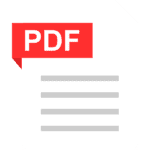General
ISAP’s Edge-of-Field Incentive Directory
ISAP’s Edge-of-Field Incentives Directory provides an overview of edge-of-field (EoF) incentive payment opportunities for farmers in Illinois. EoF practices are defined as those practices which intercept, capture, and treat subsurface drainage (conservation drainage practices) or surface runoff at the field level. The conservation drainage practices include bioreactors, constructed wetlands for tile-drainage treatment, drainage water management, drainage water recycling, and saturated buffers. Surface runoff practices include vegetated riparian buffers, filter strips, prairie strips, and restored wetlands. The directory also includes a “Stacking Matrix” so farmers can easily determine if they may be eligible to stack payments from multiple programs.
Download DocumentsMichigan State University Drainage Resources
This Michigan State University Biosystems & Agricultural Engineering website provides education and practical solutions to address drainage issues.
View Website
NRCS Conservation Drainage
The NRCS Conservation Drainage webpage provides an overview of several conservation drainage practices, research, and additional resources.
View Website
TNC Edge of Field Roadmap
“Leading at the Edge: A Roadmap to Advance Edge of Field Practices in Agriculture” – This Roadmap outlines the path to successfully achieve the scale of action needed to realize widespread water and wildlife benefits. Developed through a months-long collaborative effort, the Roadmap charts actionable steps and describes the necessary tools to help the food and agriculture sector transform U.S. working landscapes and achieve its conservation goals.
Download Documents
Illinois Drainage Research and Outreach Program (I-DROP) – Ten Ways to Reduce Nitrogen Loads from Drained Cropland in the Midwest
The IDROP Ten Ways strategies include in-field cropping and management strategies (i.e., practices that reduce nitrate in the root zone), in-field strategies that modify the drainage system (i.e., practices that reduce delivery of nitrate to the field’s edge), and edge-of-field strategies (i.e., practices that remove nitrate at the edge of the field or downstream).
View Website
Transforming Drainage Project
Transforming Drainage is a 5-year, 8-state project led by a core group of 15 leading agricultural engineers, soil scientists, agronomists, economists, social scientists, and database and GIS specialists with a common vision — to transform the way drainage is implemented across the agricultural landscape.
View Website